 W
WConservation in India can be traced to the time of Ashoka.
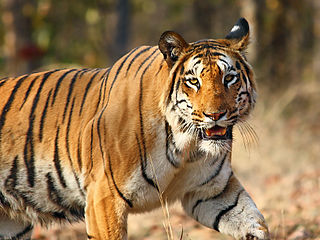 W
WThe Indian government has established 18 biosphere reserves to protect larger areas of natural habitat than a typical national park or animal sanctuary, and that often include one or more national parks or preserves, along with buffer zones that are open to some economic uses. Protection is granted not only to the flora and fauna of the protected region, but also to the human communities who inhabit these regions, and their ways of life.
 W
WThe Central Zoo Authority (CZA) is the body of the government of India responsible for oversight of zoos. It is an affiliate member of the World Association of Zoos and Aquariums (WAZA).
 W
WThe Chipko movement or Chipko Andolan, was a forest conservation movement in India. It began in 1973 in Uttarakhand, then a part of Uttar Pradesh and went on to become a rallying point for many future environmental movements all over the world. It created a precedent for starting nonviolent protest in India., However, it was Sunderlal Bahuguna, a Gandhian activist, who gave the movement a proper direction and its success meant that the world immediately took notice of this non-violent movement, which was to inspire in time many similar eco-groups by helping to slow down the rapid deforestation, expose vested interests, increase social awareness and the need to save trees, increase ecological awareness, and demonstrate the viability of people power. He used the slogan, "Ecology is the permanent economy."Above all, it stirred up the existing civil society in India, which began to address the issues of tribal and marginalized people. And it's true that the support for the movement came mainly from the womenfolk. The Chipko Andolan or the Chipko movement is a movement that practiced methods of Satyagraha where both male and female activity cests from Uttarakhand played vital roles, including Gaura Devi, Suraksha Devi, Sudesha Devi, Bachni Devi and Chandi Prasad Bhatt, Virushka Devi and others. Today, beyond the eco-socialism hue, it is being seen increasingly as an ecofeminism movement. Although many of its leaders were men, women were not only its backbone, but also its mainstay, because they were the ones most affected by the rampant deforestation, which led to a lack of firewood and fodder as well as water for drinking and irrigation. Over the years they also became primary stakeholders in a majority of the afforestation work that happened under the Chipko movement. In 1987, the Chipko movement was awarded the Right Livelihood Award "for its dedication to the conservation, restoration and ecologically-sound use of India's natural resources."
 W
WThe Convention Relative to the Preservation of Fauna and Flora in their Natural State, also known as the London Convention of 1933, was an early agreement among colonial powers for the conservation of nature. As one of the first general conservation agreement in Africa, and the first to specifically protect a plant species, it has been called the Magna Carta of wildlife conservation and "the high point of institutionalised global nature protection before the Second World War".
 W
WGobar Times is a monthly environmental education magazine for the young adult, published by the Centre for Science and Environment. It is published along with Down to Earth as a supplement. The magazine was first published in May, 1998 and has widespread circulation across India and abroad. The icon of the magazine, Pandit Gobar Ganesh, the pondering panditji is an Indian elderly who takes the reader through current issues, subjects and ideas relating to the environment. He is the icon whose brains can be picked for anything on earth. The current editor of the magazine is Sorit Gupto.
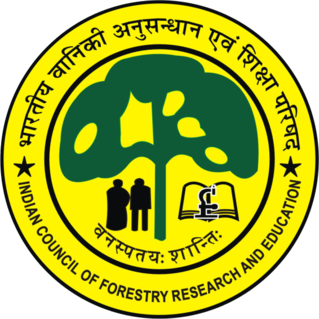 W
WThe Indian Council of Forestry Research and Education (ICFRE) is an autonomous organisation or governmental agency under the Ministry of Environment and Forests, Government of India. Headquartered in Dehradun, its functions are to conduct forestry research; transfer the technologies developed to the states of India and other user agencies; and to impart forestry education. The council has 9 research institutes and 4 advanced centres to cater to the research needs of different bio-geographical regions. These are located at Dehradun, Shimla, Ranchi, Jorhat, Jabalpur, Jodhpur, Bangalore, Coimbatore, Allahabad, Chhindwara, Aizawl, Hyderabad and Agartala.
 W
WThe Indian Forest Act, 1927 was largely based on previous Indian Forest Acts implemented under the British. The most famous one was the Indian Forest Act of 1878. Both the 1878 act and the 1927 act sought to consolidate and reserve the areas having forest cover, or significant wildlife, to regulate movement and transit of forest produce, and duty leviable on timber and other forest produce. It also defines the procedure to be followed for declaring an area to be a Reserved Forest, a Protected Forest or a Village Forest. It defines what is a forest offence, what are the acts prohibited inside a Reserved Forest, and penalties leviable on violation of the provisions of the Act.
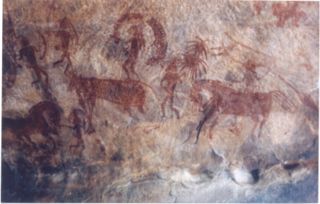 W
WNatural history in India has a long heritage with a recorded history going back to the Vedas. Natural history research in early times included the broad fields of palaeontology, zoology and botany. These studies would today be considered under field of ecology but in former times, such research was undertaken mainly by amateurs, often physicians, civil servants and army officers.
 W
WInstitute of Wood Science and Technology (IWST) is a Research institute situated in Bangalore in Karnataka. It works under the Indian Council of Forestry Research and Education (ICFRE) of the Ministry of Environment and Forests, Govt. of India. It is recognized to be a Centre of Excellence for Sandalwood Research and Wood Science
 W
WJoint Forest Management often abbreviated as JFM is the official and popular term in India for partnerships in forest movement involving both the state forest departments and local communities. The policies and objectives of Joint Forest Movement are detailed in the Indian comprehensive National Forest Policy of 1988 and the Joint Forest Management Guidelines of 1990 of the Government of India.
 W
WKaranja Sohol Wildlife Sanctuary is a protected area in the Karanja talukas of Washim district in Maharashtra, India. It was created in 2000 to preserve the black buck population. It covers 1,832 ha (18.32 km2) of forest and grasslands.
 W
WThis is a List of forest research institutes in India.
 W
WPhansad Wildlife Sanctuary(Marathi: फणसाड वन्यजीव अभयारण्य) is a wildlife sanctuary in the Murud and Roha talukas of Raigad district, Maharashtra state, India. It was created in 1986 to preserve some of the coastal woodland ecosystem of the Western Ghats and consists of 6,979 ha of forest, grasslands and wetlands. The area was once part of the hunting reserves of the princely state of Murud-Janjira.
 W
WPrivate protected areas of India refer to protected areas inside India whose land rights are owned by an individual or a corporation / organization, and where the habitat and resident species are offered some kind of protection from exploitative activities like hunting, logging, etc. The Government of India did not provide any legal or physical protection to such entities, but in an important amendment introduced by the Wildlife (Protection) Amendment Act of 2002, has agreed to protect communally owned areas of ecological value.
 W
WThe Sálim Ali Centre for Ornithology and Natural History (SACON) is a national centre for information, education and research in ornithology and natural history in India. It was inspired by and named in honour of Salim Ali, the leading pioneer of ornithology in India. It is an autonomous organisation established in 1990 as a public- NGO partnership between the MoEF&CC, and the Bombay Natural History Society(BNHS) under the Centre of Excellence Scheme and registered under the Indian Societies Registration Act. Its headquarters are at Anaikatti, Coimbatore, Tamil Nadu, India. SACON is associated with the Ministry of Environment and Forests SACON's mission is:"To help conserve India’s biodiversity and its sustainable use through research, education and peoples’ participation, with birds at the centre stage".
 W
WSalim Ali's fruit bat is a rare megabat species in the monotypic genus Latidens.
 W
WSave Earth Series (SES) is an initiative to teach children the importance of wildlife. This non-profit organization is based in Kochi, Kerala, India and founded by wildlife photographer Shah Jahan. The purpose of the NGO is to create awareness among school children about the importance of wildlife.
 W
WSave Silent Valley was a social movement aimed at the protection of Silent Valley, an evergreen tropical forest in the Palakkad district of Kerala, India. It was started in 1973 by an NGO led by school teachers and the Kerala Sastra Sahithya Parishad(KSSP) to save the Silent Valley from being flooded by a hydroelectric project. The valley was declared as [Silent Valley National Park] in 1985. The Kuntipuzha is a major river that flows 15 km southwest from Silent Valley. It takes its origin in the lush green forests of Silent Valley. In 1928 the location at Sairandhri on the Kunthipuzha River was identified as an ideal site for electricity generation. In 1970 Kerala State Electricity Board(KSEB) proposed a hydroelectric dam across the Kunthipuzha River that runs through Silent Valley, that will submerge 8.3 sq km of untouched moist evergreen forest. In February 1973, the Planning Commission approves the project at a cost of about Rs 25 crores.
 W
WThe Scheduled Tribes and Other Traditional Forest Dwellers Act, 2006, is a key piece of forest legislation passed in India on 18 December 2006. It has also been called the Forest Rights Act, the Tribal Rights Act, the Tribal Bill, and the Tribal Land Act. The law concerns the rights of forest-dwelling communities to land and other resources, denied to them over decades as a result of the continuance of colonial forest laws in India.
 W
WSispara, സിസ്പാര, a proper noun, is a combination of the Badaga language words si:su + pore; meaning: magnetite bearing rock + gorge. It may refer to:Sispara peak, a large hill in Kerala; Sispara bungalow, the shelter at the base of the peak; Sispara pass, the low gap between hills where the shelter is located; or Sispara ghat, the mountain trail that goes through the pass.
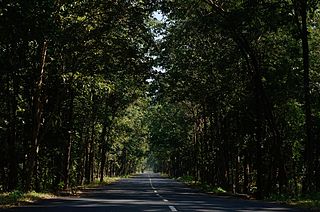 W
WSocial forestry is the management and protection of forests and afforestation of barren and deforested lands with the purpose of helping environmental, social and rural development. The term social forestry was first used in 1976 by The National Commission on Agriculture, when the government of India aimed to reduce pressure on forests by planting trees on all unused and fallow lands. It was intended as a democratic approach to forest conservation and usage, maximizing land utilization for multiple purposes.
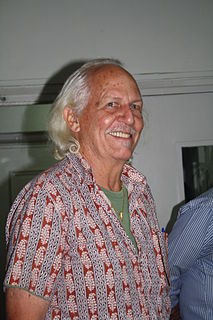 W
WRomulus Earl Whitaker is an Indian herpetologist, wildlife conservationist and founder of the Madras Snake Park, The Andaman and Nicobar Environment Trust (ANET), and the Madras Crocodile Bank Trust. In 2008, Whitaker was selected as an Associate Laureate in the 2008 Rolex Awards for Enterprise, for his efforts to create a network of rainforest research stations throughout India. In 2005 he was a winner of a Whitley Award for outstanding leadership in nature conservation. He used this award and found the Agumbe Rainforest Research Station in Karnataka, for the study of King Cobras and their habitat.
 W
WZoo Outreach Organisation (ZOO), India started off as an NGO primarily focusing on training zoo staff and bettering the circumstances of captive animals in Indian zoos. It has since evolved into an overall nature and wildlife conservation NGO, and is an affiliate member of the World Association of Zoos and Aquariums (WAZA).